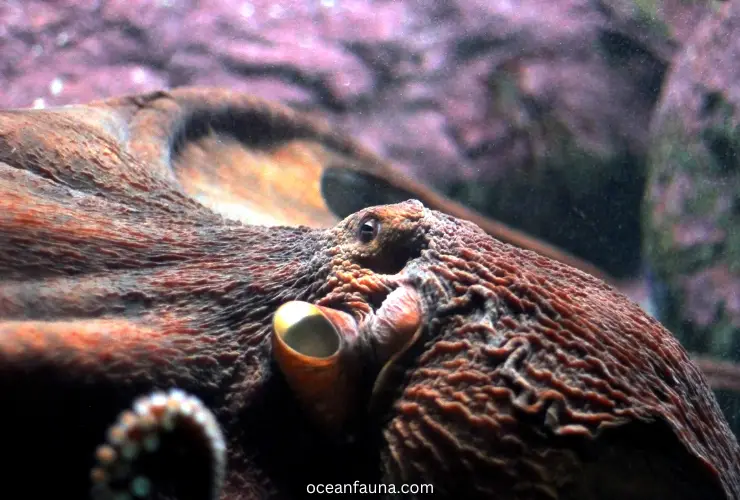Yes, octopuses can see, and they also have eyes. And they are not entirely colorblind since they can detect blue and yellow colors. Still, they are so many mysterious doubts among people about the visual capability of octopuses. In this article, I will try to explain in detail in this regard.
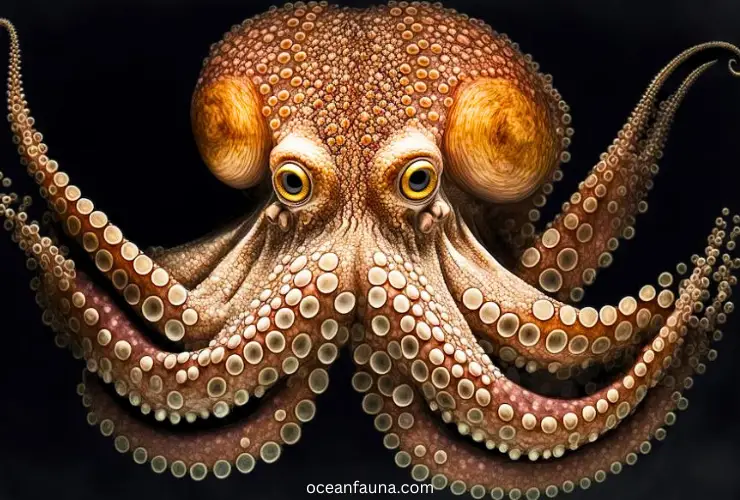
Do Octopuses Have Eyes?
Yes, octopuses have eyes. But, do you know, “How many eyes do an octopus have?” Well, an octopus has two eyes that are structurally similar to human eyes.
The octopus eye contains a cornea, lens, iris, and retina, as well as muscles and nerves that allow it to move and focus. The shape of the eye gives the octopus excellent depth perception, enabling it to navigate its surroundings and hunt for prey.
Interestingly, the octopus eye also has a special adaptation that allows it to adjust its focus and see clearly in both dim and bright light. This adaptation is achieved in part by the presence of a unique pigment in the retina called cephalin, which can adjust its sensitivity to light depending on the environment.
Additionally, some octopus species are known to have specialized eyes that allow them to see polarized light. This means they can see patterns and details that are invisible to human eyes, giving them an advantage in hunting and protecting themselves from predators.
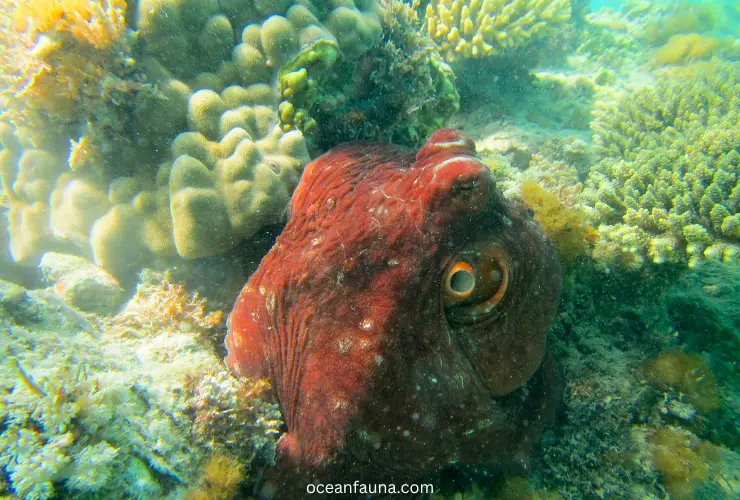
Can Octopus See: Yes, But How?
Octopuses possess a complex visual system that allows them to navigate and hunt effectively underwater. Despite lacking color vision compared to humans and many other animals, octopuses can process visual information uniquely, enabling them to detect various visual cues essential for survival.
Recent research has shown that octopuses possess a single type of light receptor called rhodopsin, which is sensitive to blue light. As such, they are able to detect shades of blue and yellow in their environment. This helps them determine the colors of prey, predators, and other important visual cues vital for their survival.
While octopuses’ color vision may not be as diverse as humans, they compensate for this with a highly developed ability to distinguish the shapes, contrasts, and textures of objects in their environment.
They can identify and distinguish fine details and even infer three-dimensional information from a two-dimensional image. This superior visual processing ability enables them to successfully evade predators, find food, and mate.
Moreover, octopuses possess a remarkable ability to camouflage themselves, blending into their surroundings to avoid detection. Using color and texture changes, they can mimic their environment and transform their skin to match the background they are on, enabling them to remain unseen to potential predators.
Anatomy of Octopus Eyes
Cornea: The outermost layer of an octopus eye is the cornea. It is a tough, transparent layer that helps protect the eye and focuses the light entering the eye.
Iris: The iris, located just behind the cornea, is a pigmented layer that gives the eye its color. It controls the amount of light that enters the eye by adjusting the pupil size.
Lens: The lens of an octopus eye is located behind the iris and is responsible for focusing the light onto the retina.
Retina: The retina is the innermost layer of the octopus eye that contains special cells called photoreceptors. These cells detect light and send signals to the brain through the optic nerve.
Optic Nerve: The optic nerve carries the visual signals from the retina to the octopus’s brain, where they are processed to create a visual image.
Fovea: The fovea is a small area on the octopus retina where there is a high concentration of photoreceptor cells. This area provides the octopus with high acuity vision and helps to perceive fine details.
Pigment Cells: Apart from the iris, the retina of an octopus eye also contains pigment cells, which help in adjusting the sensitivity of the photoreceptor cells in different light conditions. These cells are responsible for changing the color of the retina, allowing the octopus to see even in low-light conditions.
Pupillary Receptors: These specialized cells are located within the iris and help to detect the direction and intensity of the surrounding light. The information from these cells helps adjust the pupil’s size to optimize the amount of light entering the eye.
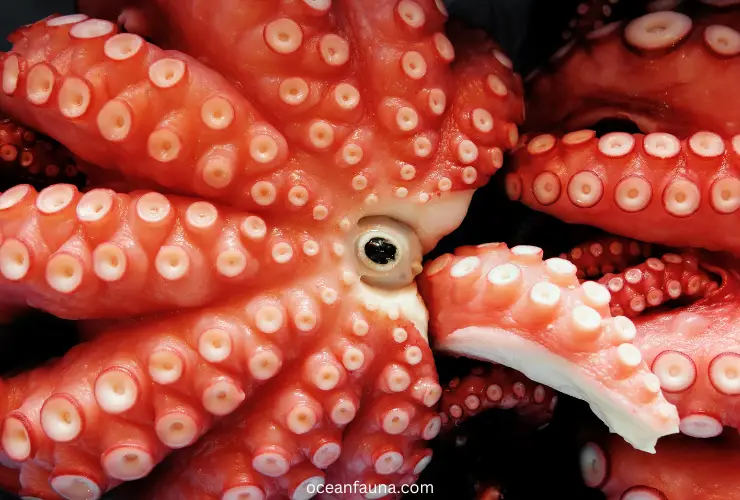
Is Octopus Colorblind?
Whether octopuses are colorblind has been a topic of interest in the scientific community for quite some time. The answer lies somewhere between yes and no. While it is true that octopuses, like most other cephalopods, see in black and white, recent research suggests that their peculiar eye structure may allow them to perceive certain colors.
Octopus eyes are structurally very different from those of most other animals. They are covered in thousands of little units called ommatidia, each of which is capable of detecting light and movement independently.
Moreover, the pupils of octopuses are not circular but slit-shaped, enabling them to see objects at different distances with maximum focus.
The research conducted by the father-son team from the University of California, Berkeley, and Harvard University shed new light on the color perception capabilities of these fascinating creatures.
The researchers created a virtual reality environment that mimics different underwater settings and allowed octopuses to interact with it. They found that octopuses could change their skin color to match their surroundings, indicating that they can perceive the colors in their environment.
Also, octopuses have only one type of light receptor called rhodopsin. This receptor is sensitive to blue light and allows them to see shades of blue and yellow in their surroundings, as revealed by recent research.
Do Octopuses Have Good Eyesight?
Although octopuses have a relaxed short-sighted eyeballs, octopuses possess an impressive visual trick that enables them to have excellent eyesight. By contracting a circular muscle around their eyes, they can move their lens closer to the retina, allowing them to see objects far away in much better detail.
It is noteworthy to mention that despite being mostly colorblind creatures, the octopus has a keen sense of vision, which is crucial for their survival. Like humans, octopuses have binocular vision, meaning they can see with both eyes simultaneously.
Their eyes are also equipped with a complex system of photoreceptors that allow them to see in dim light and help them detect polarized light in the water, which is essential for navigation.
Furthermore, the octopus’s eyes are well adapted to their surroundings, giving them a competitive advantage in the oceanic world. The eyes possess unique features that make them ideal for their environment, including an iris that can change color and shape to adapt to different lighting conditions and a robust cornea that can withstand high pressure.
Can An Octopus See Without Eyes?
Octopuses, being visual animals, rely heavily on their eyes for navigation and capturing prey. As such, they cannot see without eyes. However, studies have shown that they can detect light even without their eyes and brain. Light-detecting cells called photoreceptors scattered throughout their body make this unusual ability possible.
Besides their ability to detect light without their eyes, octopuses are also well-known for their remarkable camouflage skills. They can quickly change the color and texture of their skin to blend in with their surroundings, making them almost invisible to predators and prey alike.
Studies have shown that octopuses achieve this incredible feat by using specialized pigment cells and muscles under their skin to mimic the texture and color of their background environment.
How Do Octopuses Navigate in the Dark?
Octopuses are nocturnal creatures and are able to navigate even in complete darkness. This is possible because of their excellent vision, as well as their ability to detect light without the use of eyes.
Also, they have a highly developed nervous system, which allows them to process complex sensory information quickly and effectively. Their eyesight, in particular, is highly specialized and adapted to low-light conditions.
Octopuses have large, highly sensitive eyes that can detect even the faintest traces of light. Even when they can’t see, their skin detects the lights.
In addition, they possess a range of specialized cells that help them distinguish between colors, shapes, and patterns, even in near-total darkness.
Another crucial factor in an octopus’s ability to navigate in the dark is its incredible sense of touch.
Octopuses have an unparalleled sense of touch thanks to the thousands of sensory receptors located in their skin, which enable them to detect even the slightest vibrations and changes in pressure. This sense of touch helps them navigate their surroundings, locate prey, and avoid predators.
In addition to their incredible sensory abilities, octopuses possess special memory. They can remember complex mazes and navigate them without error, even months after their initial training. This memory is crucial for octopuses to remember their surroundings and navigate through them in complete darkness.
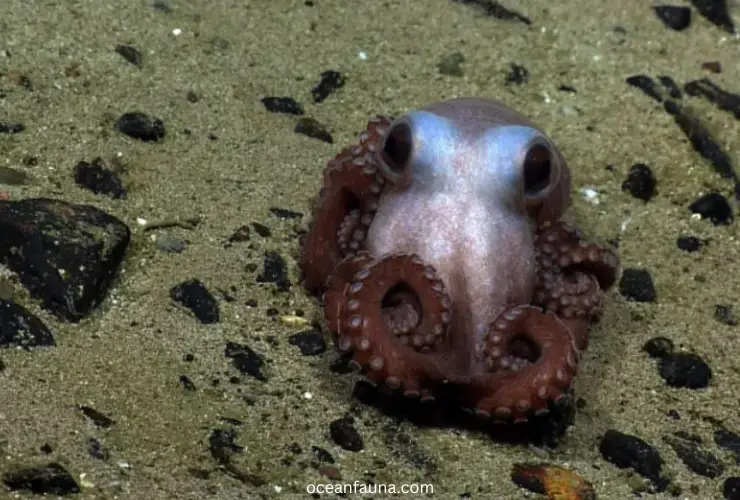
Can Octopuses See Better Than Humans?
Octopuses have a remarkable visual system that outperforms that of humans by a significant margin. Their vision is so exceptional that they can recognize their prey from a distance of more than 60 feet. This is because they have more photoreceptors than vertebrates, which are specialized cells that detect light and are responsible for image formation.
While humans have only three types of photoreceptors that enable us to see colors, octopuses have thousands of them. The two main types of photoreceptors in octopuses are called rhabdomeric and ciliary receptors, both of which are located in the retina.
Rhabdomeric receptors are susceptible to light, allowing octopuses to detect even the slightest environmental changes. On the other hand, ciliary photoreceptors are responsible for color vision and the detection of moving objects.
The high density of photoreceptors in octopuses results in a higher resolution of their vision, allowing them to see finer details than humans. Additionally, the way their photoreceptors are arranged in their eyes gives them a broader visual field, allowing them to see objects over a wider angle.
Furthermore, octopuses can change the shape of their pupils to control the amount of light entering their eyes. This means they can see clearly in bright and dim conditions, making them incredibly adaptable to their surroundings.
Conclusion
Now you have a complete idea of the visual abilities of octopuses. These incredible creatures have impressive features that enable them to easily navigate in the dark, including highly sensitive eyes, specialized cells for color and pattern recognition, a remarkable sense of touch, and an excellent memory.
If you have any further queries regarding this matter, let me know.

